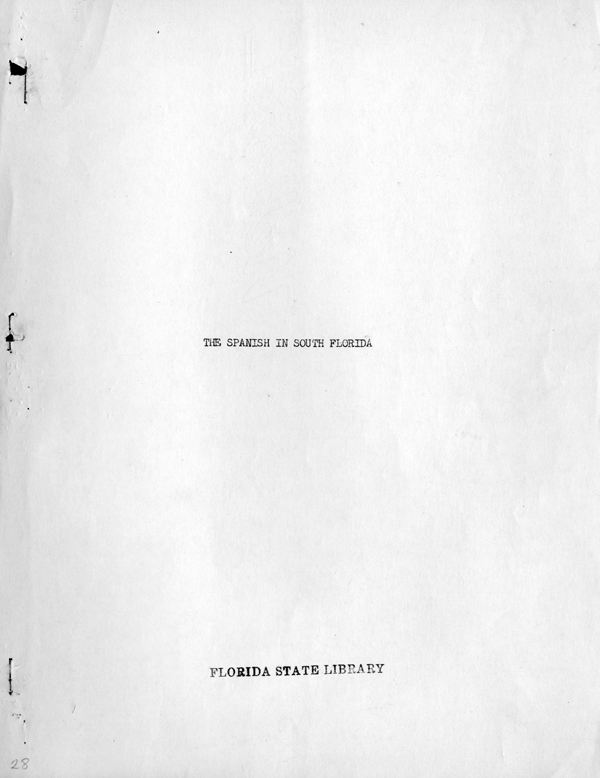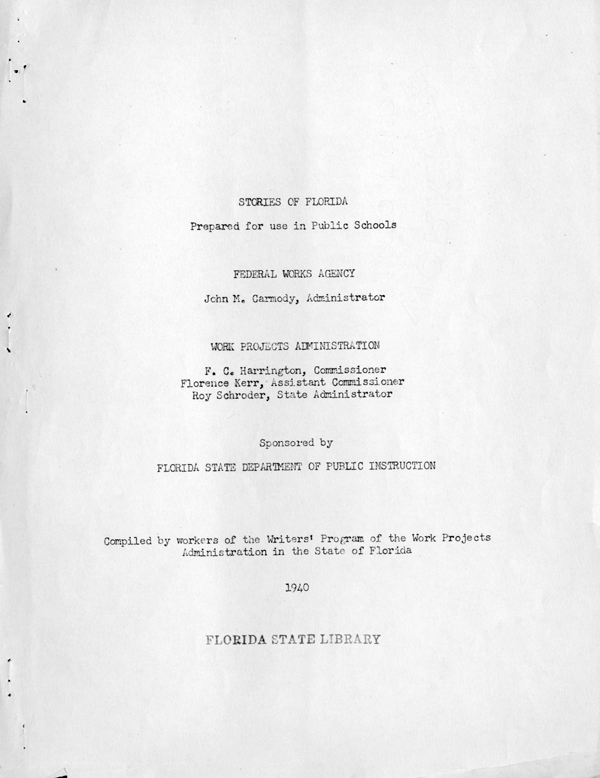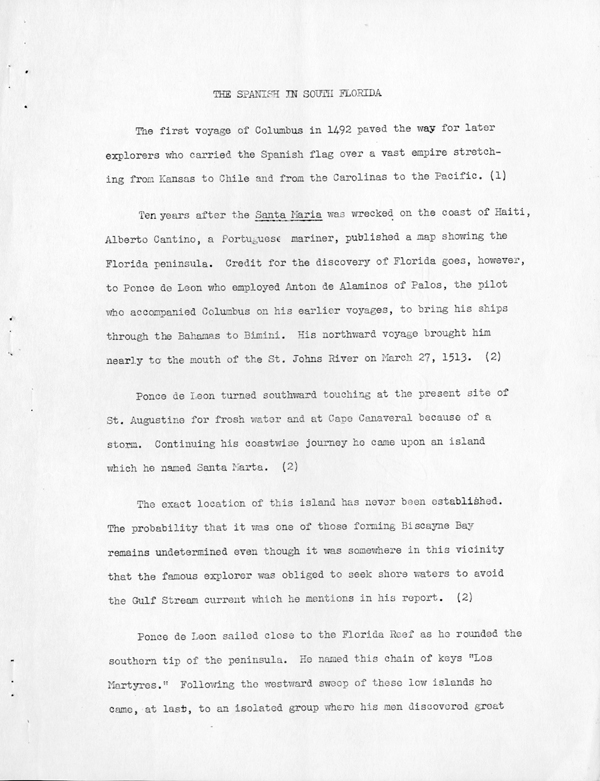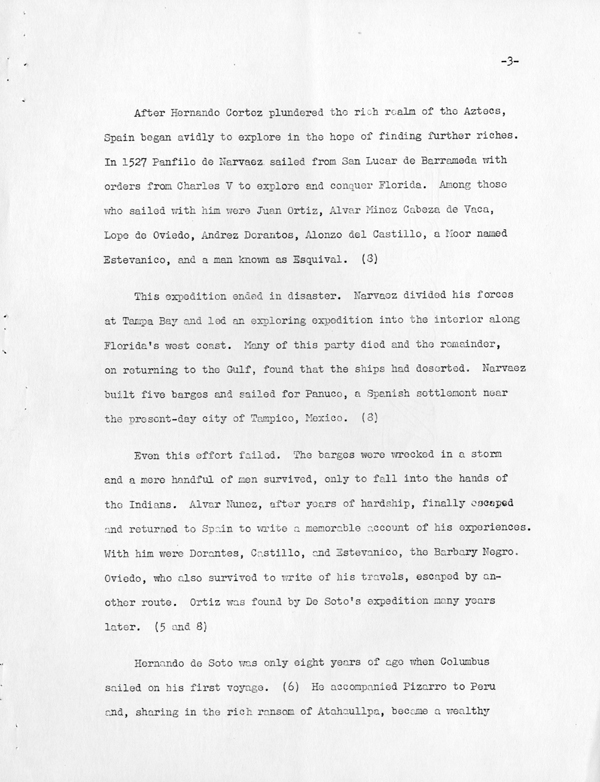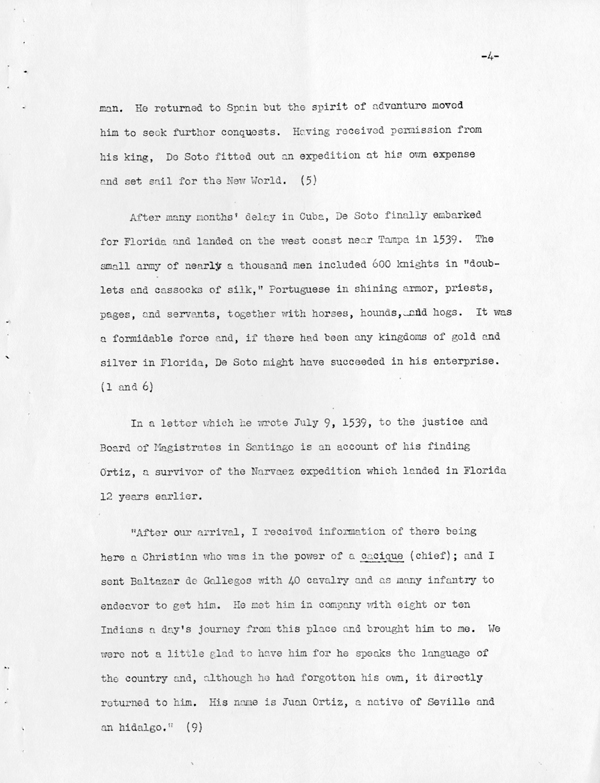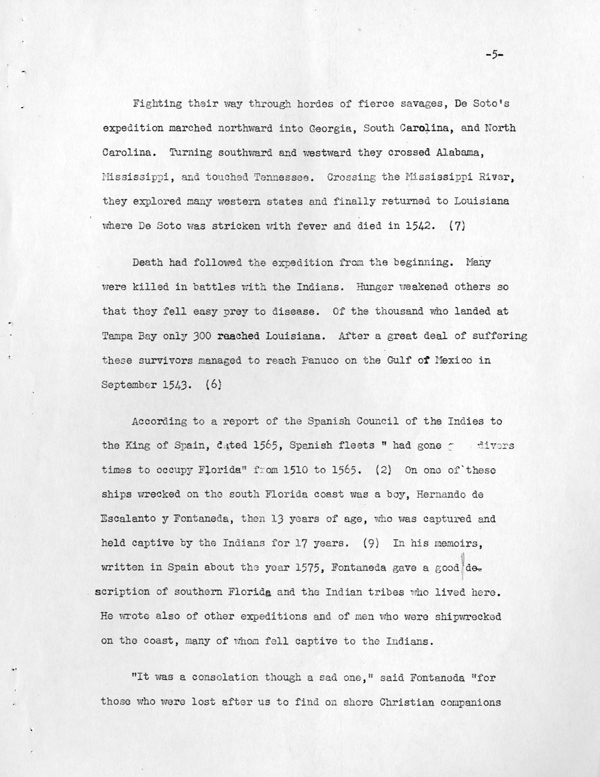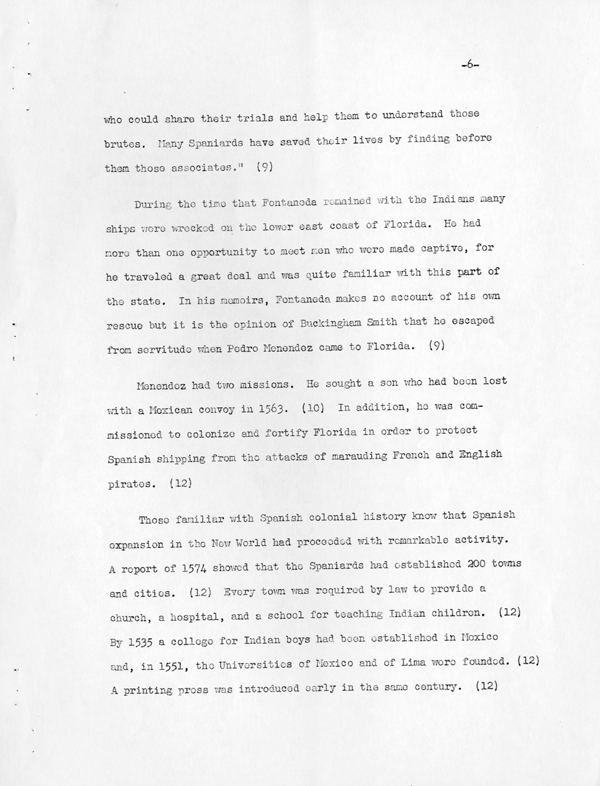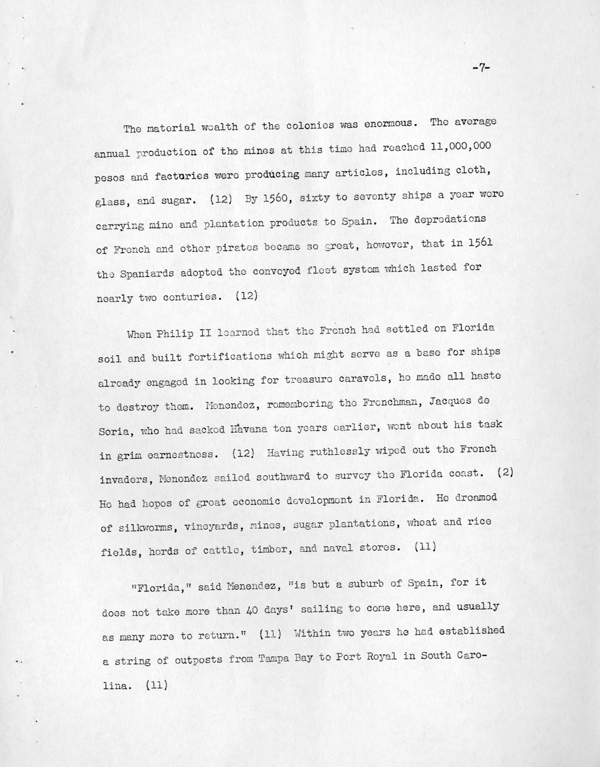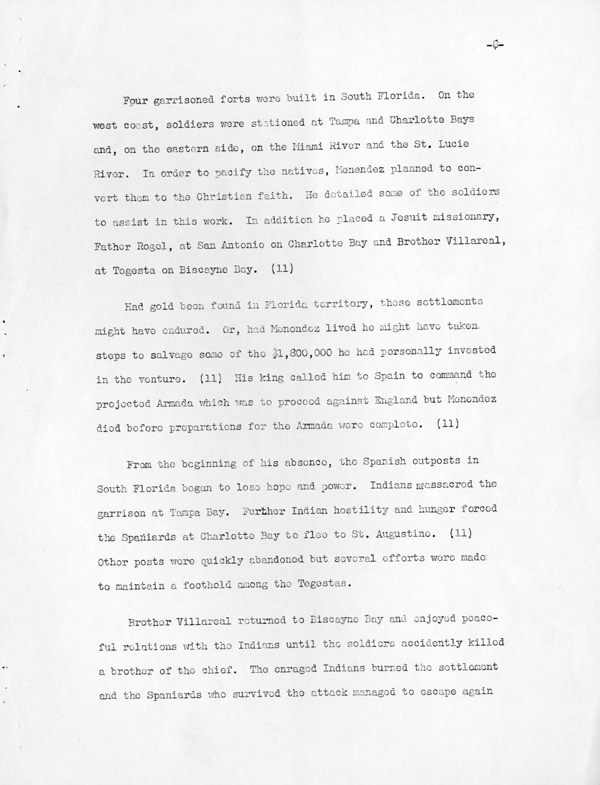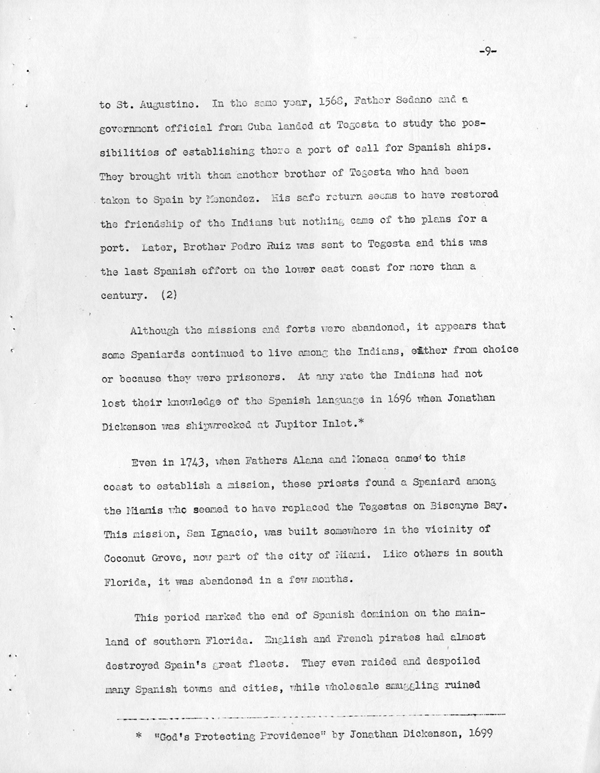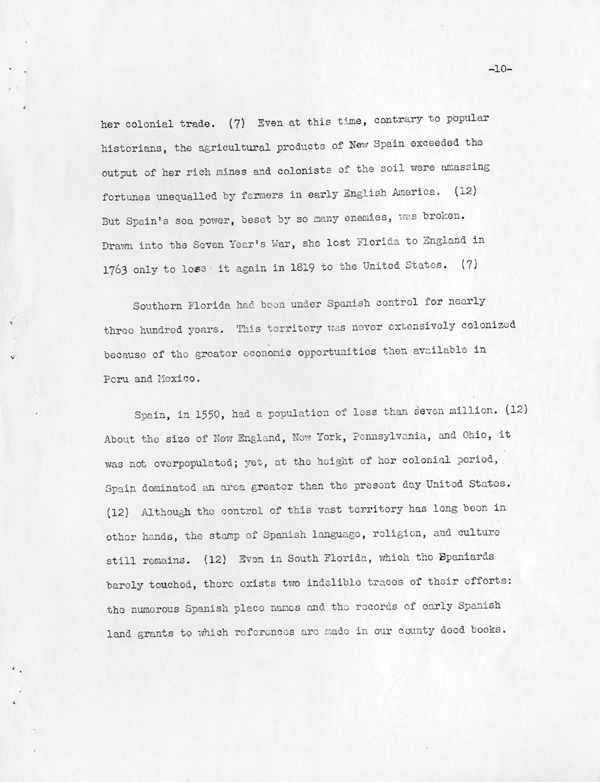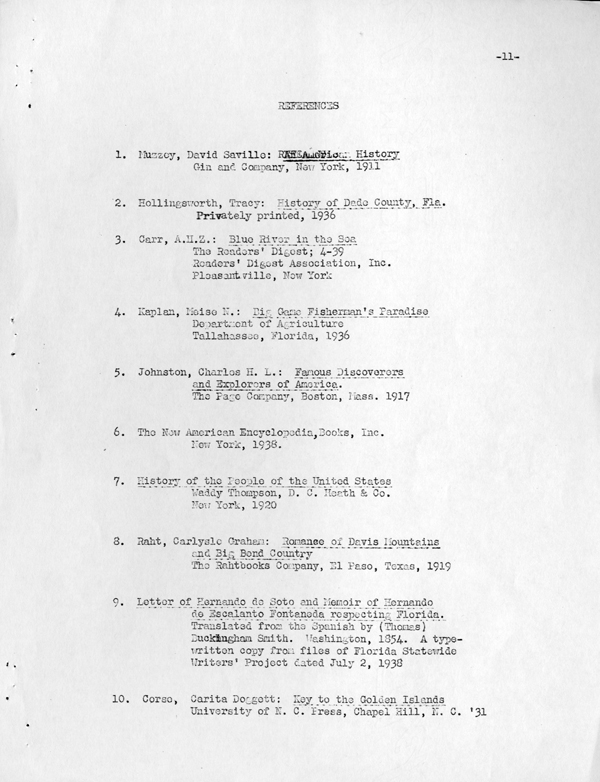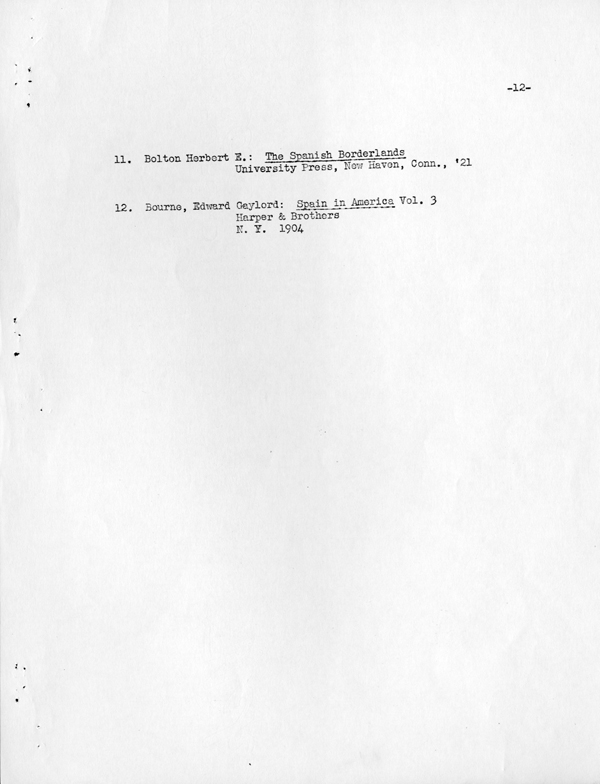Florida Memory is administered by the Florida Department of State, Division of Library and Information Services, Bureau of Archives and Records Management. The digitized records on Florida Memory come from the collections of the State Archives of Florida and the special collections of the State Library of Florida.

State Archives of Florida
- ArchivesFlorida.com
- State Archives Online Catalog
- ArchivesFlorida.com
- ArchivesFlorida.com
State Library of Florida
Related Sites
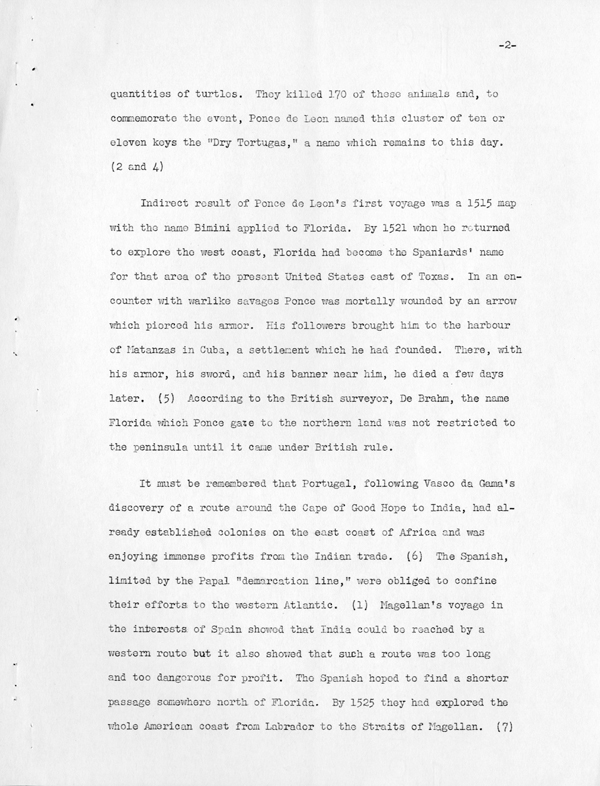
Description of previous item
Description of next item

Title
Published Date
[page 2]
quantities of turtles. They killed 170 of these animals and, to commemorate
the event, Ponce de Leon named this cluster of ten or eleven keys the "Dry
Tortugas," a name which remains to this day. (2 and 4)
Indirect result of Ponce de Leon's first voyage was a 1515 map
with the name Bimini applied to Florida. By 1521 when he returned to
explore the west coast, Florida had become the Spaniards' name for that
area of the present United States east of Texas. In an encounter with
warlike savages Ponce was mortally wounded by an arrow which pierced
his armor. His followers brought him to the harbor of Matanzas in Cuba, a
settlement which he had founded. There, with his armor, his sword, and
his banner near him, he died a few days later. (5) According to the British
surveyor, De Brahm, the name Florida which Ponce gave to the northern
land was not restricted to the peninsula until it came under British rule.
It must be remembered that Portugal, following Vasco da Gama's
discovery of a route around the Cape of Good Hope to India, had
already established colonies on the east coast of Africa and was enjoying
immense profits from the Indian trade. (6) The Spanish, limited by the
Papal "demarcation line," were obliged to confine their efforts to the
western Atlantic. (1) Magellan's voyage in the interests of Spain
showed that India could be reached by a western route but it also
showed that such a route was too long and too dangerous for profit. The
Spanish hoped to find a shorter passage somewhere north of Florida. By
1525 they had explored the whole American coast from Labrador to the
Straits of Magellan. (7)
Title
Subject
Description
Source
Date
Format
Language
Type
Identifier
Published Date
Image URL
Thumbnail
Transcript Path
Image Path
Image Path - Large
Chicago Manual of Style
The Spanish in South Florida. 1940. State Archives of Florida, Florida Memory. <https://www.floridamemory.com/items/show/181540>, accessed 16 December 2025.
MLA
The Spanish in South Florida. 1940. State Archives of Florida, Florida Memory. Accessed 16 Dec. 2025.<https://www.floridamemory.com/items/show/181540>
AP Style Photo Citation

 Listen: The Latin Program
Listen: The Latin Program